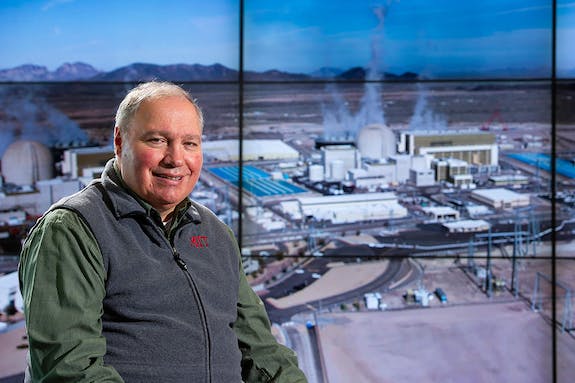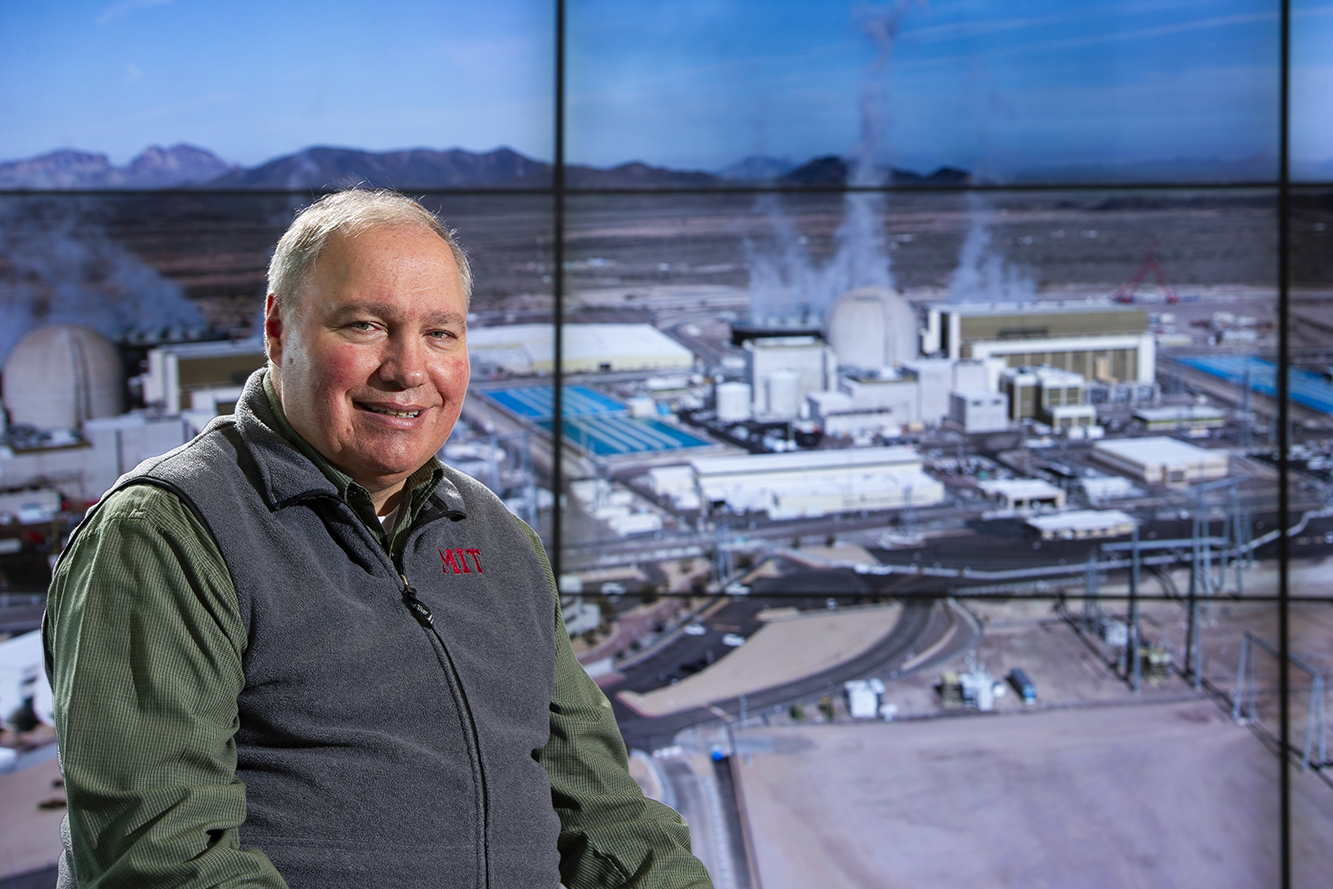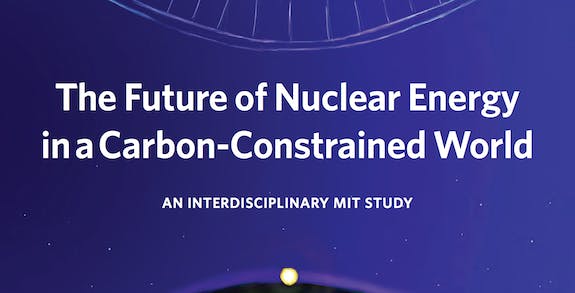History is rife with stories about unexpected opportunities:
Teddy Roosevelt’s reformation presidency came about after an anarchist assassinated President William McKinley.
Lou Gehrig’s 2,130 game streak resulted from a poor start to the season by the New York Yankees and the benching of first baseman Wally Pipp.
And the Indiana Jones movies would have looked far different had Tom Selleck, the first choice, accepted the lead role.
Though their ascensions could be considered accidental, Roosevelt, Gehrig and Harrison Ford were prepared when their moment arrived. They were the right men, in the right place, at the right time. As H. Jackson Brown Jr. wrote, “Opportunity dances with those already on the dance floor.”
INL’s Dr. David Petti has spent nearly 40 years on the dance floor.

Petti’s notable career began with an internship at INEL in 1980. Today, he finds himself at the center of the nuclear energy world – as the executive director on a high-profile Massachusetts Institute of Technology (MIT) study: “The Future of Nuclear Energy in a Carbon-Constrained World.”
Petti earned his bachelor’s degree, master’s degree and Ph.D. from MIT. Following a long career at Idaho National Laboratory, opportunity arrived unexpectedly. Petti returned to his alma mater two years ago on a joint appointment, splitting his time between INL and MIT so he could lead the report.
The MIT report
In 2003, MIT, led by Ernest Moniz, who would later become U.S. Secretary of Energy under President Obama, released “The Future of Nuclear Power.” It was the first of MIT’s renowned “Future of” studies aimed at addressing complex issues involving energy and the environment.
Future MIT studies addressed geothermal energy (2006), coal (2007), an update on nuclear power (2009), natural gas (2011), the nuclear fuel cycle (2011), the electric grid (2011), and solar energy (2015).
Petti became involved in MIT’s ninth study after one of the original co-chairs died and another was promoted. When MIT’s Energy Initiative looked around, it discovered the right man, in the right place, at the right time.
MIT released the report this month and Petti and his colleagues will discuss their findings at events in London, Paris, Brussels and Washington, D.C. An event in Tokyo will follow on Oct. 9.
In the nuclear energy world, this is a big deal.
“I can’t overstate the importance of the MIT reports in advancing the dialogue on nuclear energy,” said INL Director Mark Peters, who served as one of seven reviewers of the study. “INL is proud to have been a part of the process that resulted in this study, and we’re also very proud of Dave Petti’s work and distinguished career.”
Past, present, future
Thirty-eight years ago, INL was INEL, Mount St. Helens erupted, CNN launched, John Lennon was murdered, the U.S. defeated the Soviet Union in the “Miracle on Ice,” the Reagan era was soon to begin, and Dave Petti began what would become his life’s work.
Petti interned at INL for several summers before joining full time in 1986, embarking upon a professional journey that would see him become expert in many aspects of nuclear energy research and development, and leave him well prepared for his unexpected assignment at MIT.
Petti studied severe accidents, focusing on Three Mile Island not long after it took place, gas reactors, fusion safety and nuclear fuel. He was co-National Technical Director of the U.S. Department of Energy’s Advanced Reactor Program.
It all added up to Petti becoming one of the few people to begin their careers at INL as an intern and earn the status of INL Laboratory Fellow.
“He is a very big figure in all this,” said John Wagner, Associate Laboratory Director for Nuclear Science and Technology. “Think about his contributions, what a force he’s been. He’s one of those guys, when he talks, people stop and listen.”
Like everyone involved in nuclear energy, Petti has experienced highs and lows – the inevitable recession lurking behind the anticipated renaissance.
The MIT study, and the work involved in making it possible, offered Petti an opportunity to impact the future, address issues impeding an expansion of low-carbon nuclear energy, and offer recommendations to policymakers and industry.
The bottom line, Petti said, is the need for greater awareness that demand for energy will increase an estimated 40 percent by 2050, and the only way to meet it and reduce carbon emissions is to build thousands of advanced nuclear reactors around the world.
“To decarbonize, we’re going to need a lot of reactors,” Petti said. “One of the big reasons to do nuclear is decarbonization.”
Petti said recent bankruptcies and shuttering of nuclear power plant projects in Georgia and South Carolina caused the MIT group to focus even more on cost, and deliver recommendations centered upon reducing them.
Those include two of potential interest to INL: establishment of reactor sites “where companies can deploy prototype reactors for testing and operations orientated to regulatory licensing;” and establishment of funding programs “around prototype testing and commercial deployment of advanced reactor designs …”
One of the most enlightening aspects of the study looked at decarbonization models, and the belief that the world can meet future energy demands and carbon-reduction goals using a combination of solar, wind and battery storage.
Petti and his colleagues looked at models centered in Texas and New England, factoring in anticipated weather conditions for an entire year.
What did they find? “The answer is ‘maybe,”’ Petti said about the wind, solar and storage question, “but the cost would be astronomical. Bring nuclear into the mix and the costs go down.”
Petti said he is proud of the nearly 300-page document he and his team produced, and hopes it will inspire serious discussions at statehouses around the country and on Capitol Hill.
“I see it as a capstone,” Petti said. “What an opportunity to effect the nuclear debate on the international level.”






